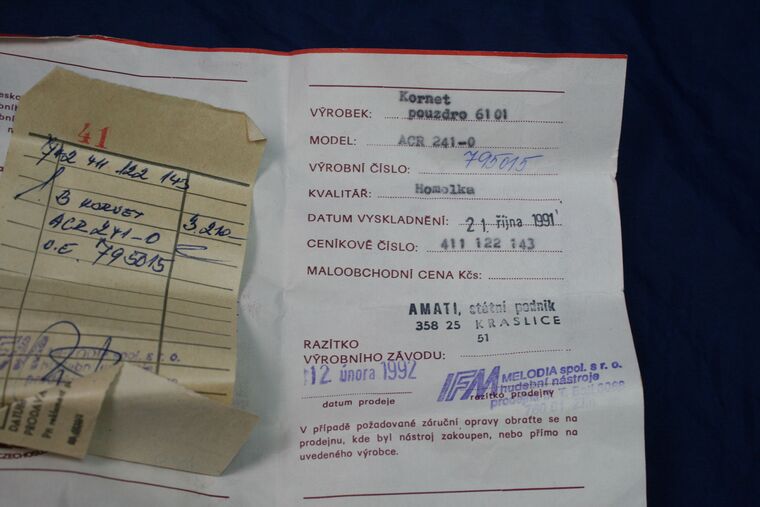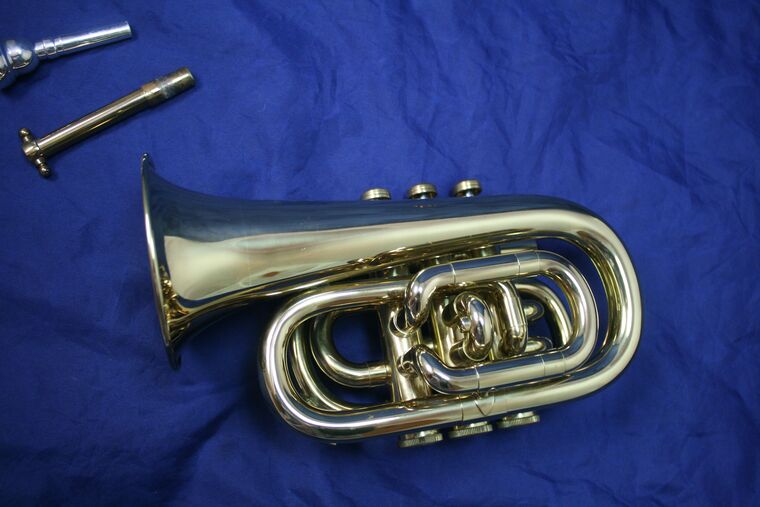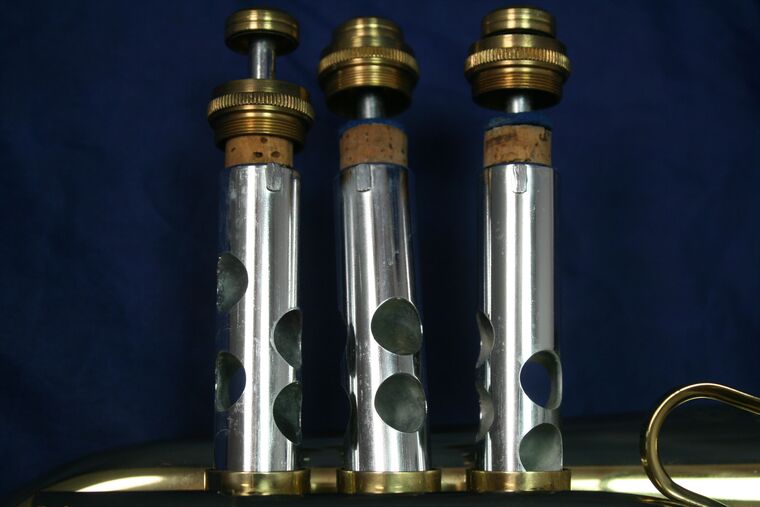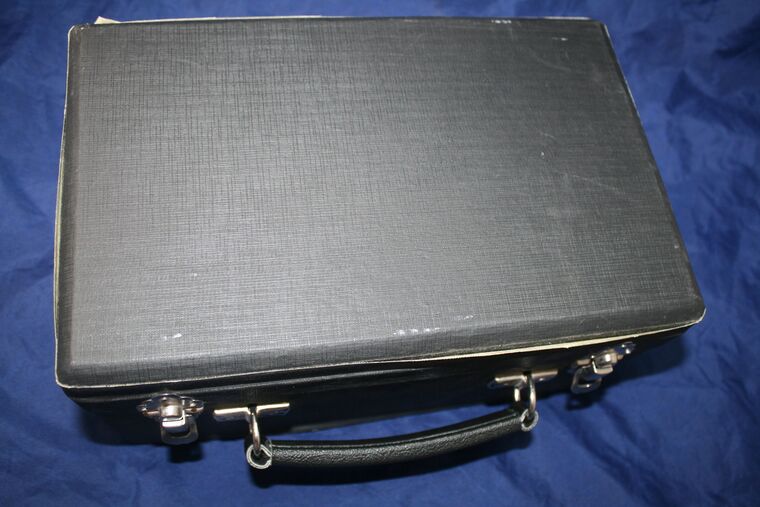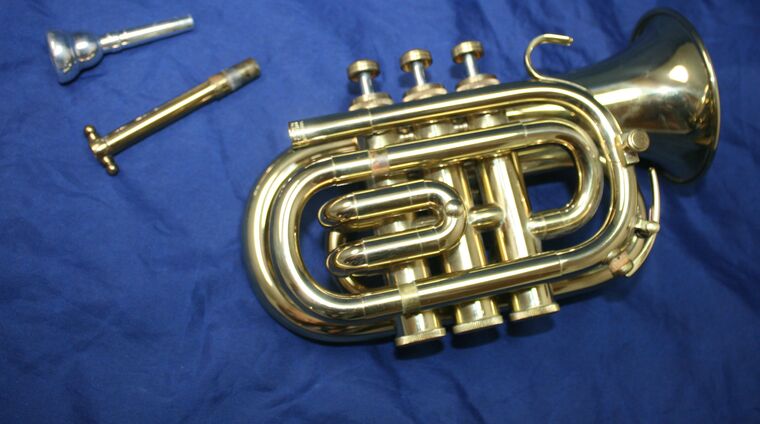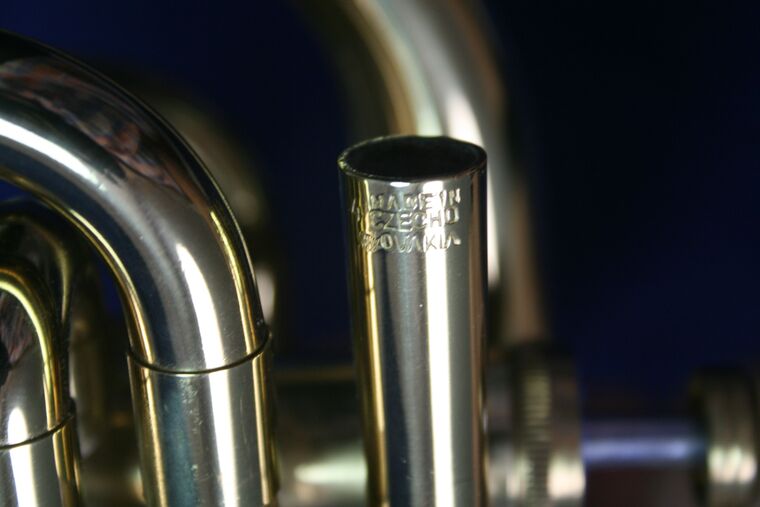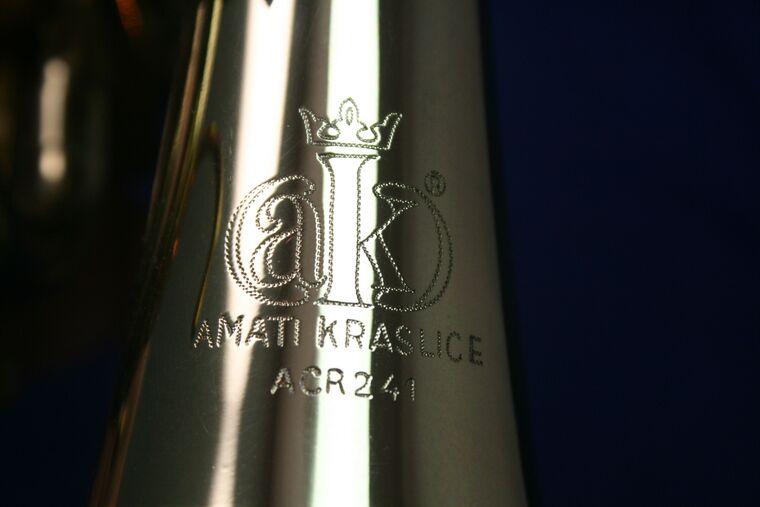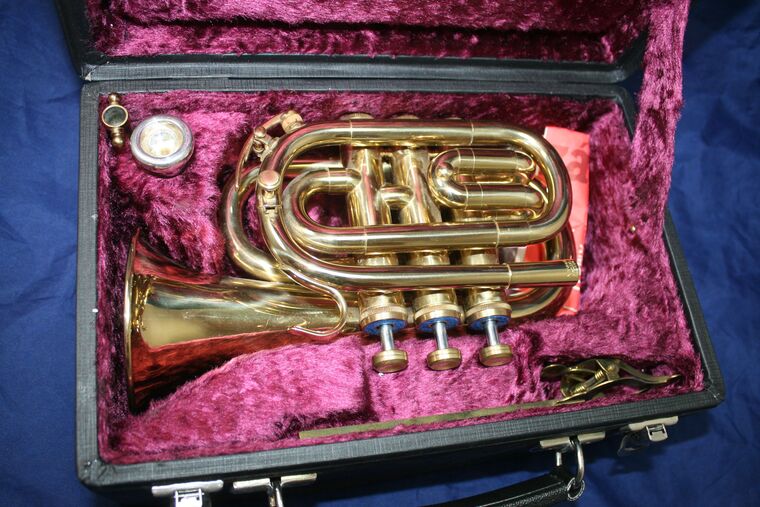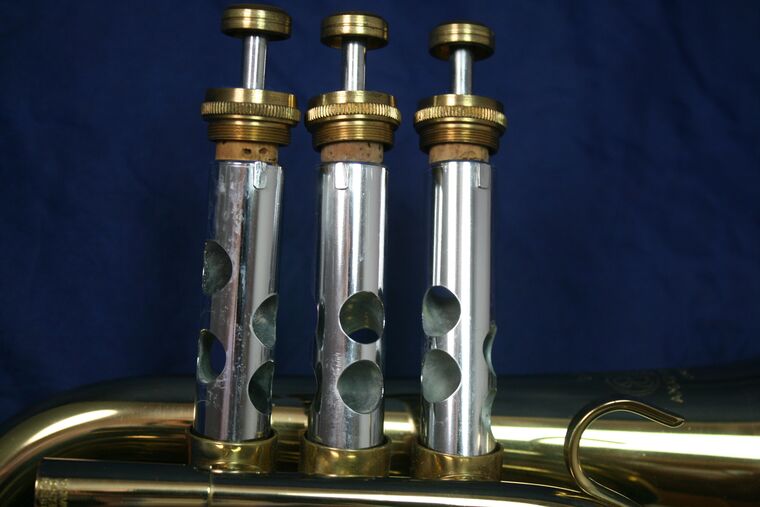Amati-Kraslice - the ones we love to hate?
-
@conndirectorfan Lucked out and found a rarity with its original inspection/warranty slip! This is model AFH-201, the standard flugelhorn, which appears to be from March 1998 [1.3.98 - note 15 Oct 99 above], serial 865738. Note the older style milled caps and buttons and plastic case with older-style latches and "smoother" exterior than the later molded cases.
For reference, 862346 is an ATR-303 Festival type dated Jan 1994 - hard to say how the serials all line up, but this puts the reset around the 1990s...so far...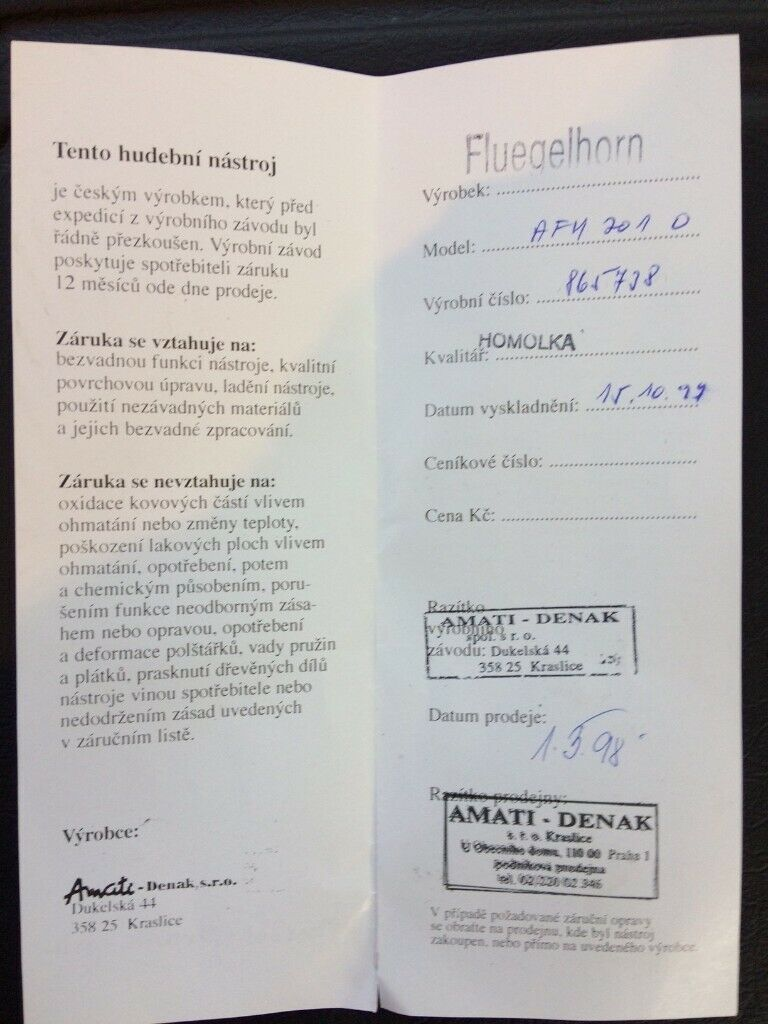
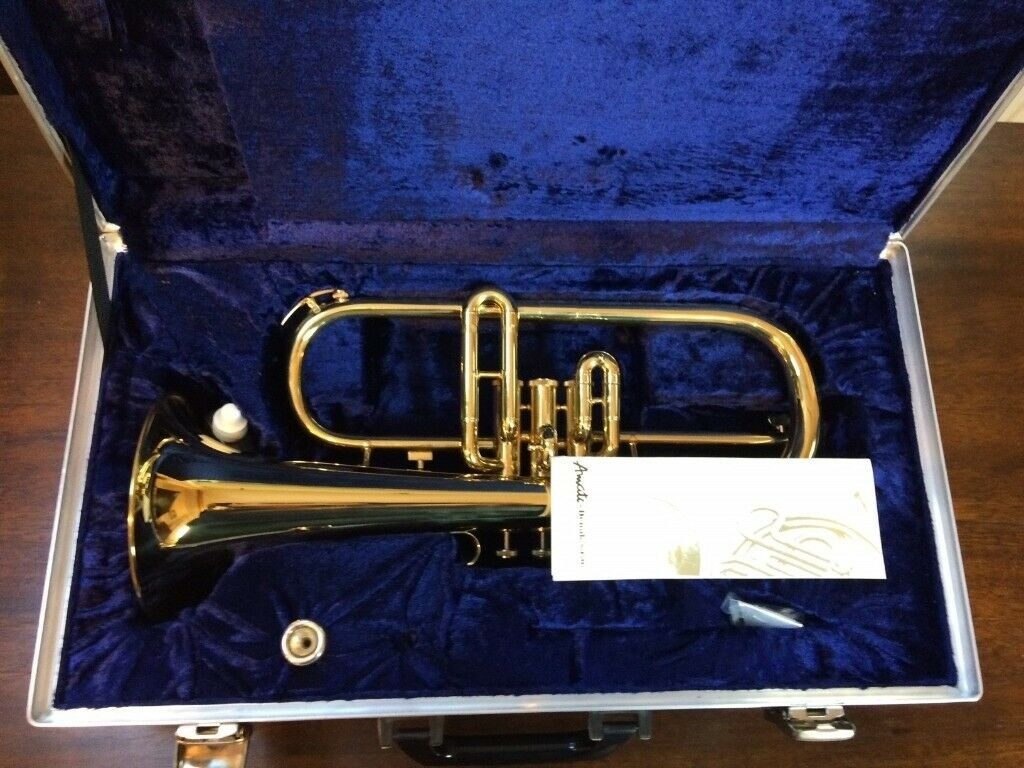
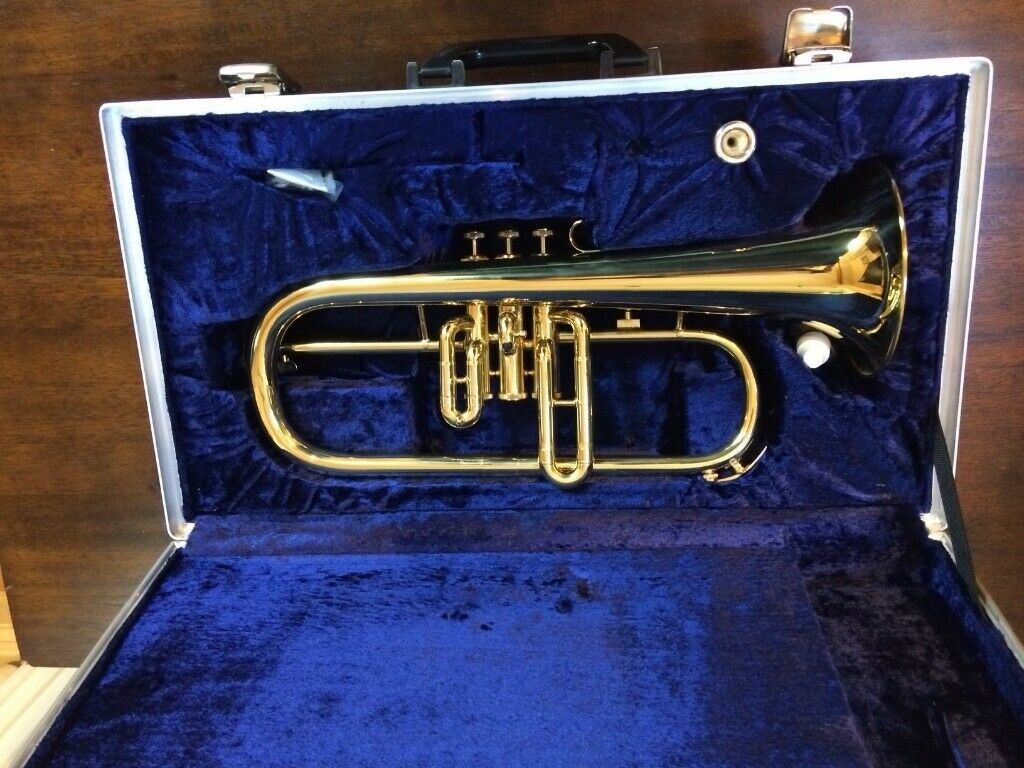
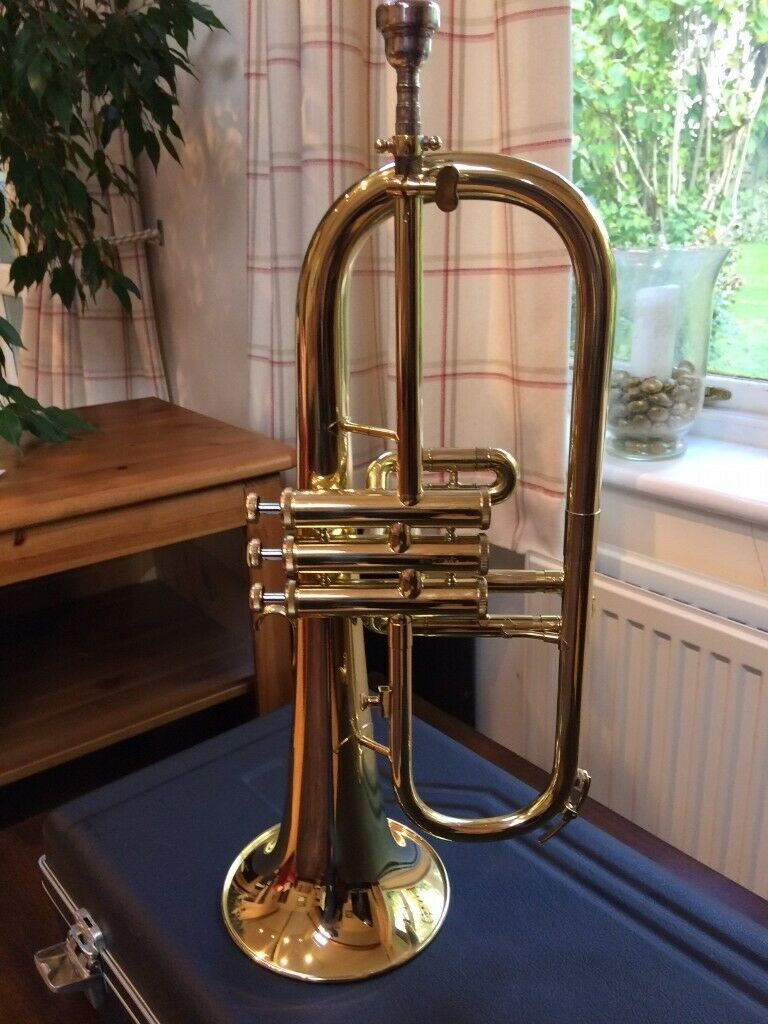
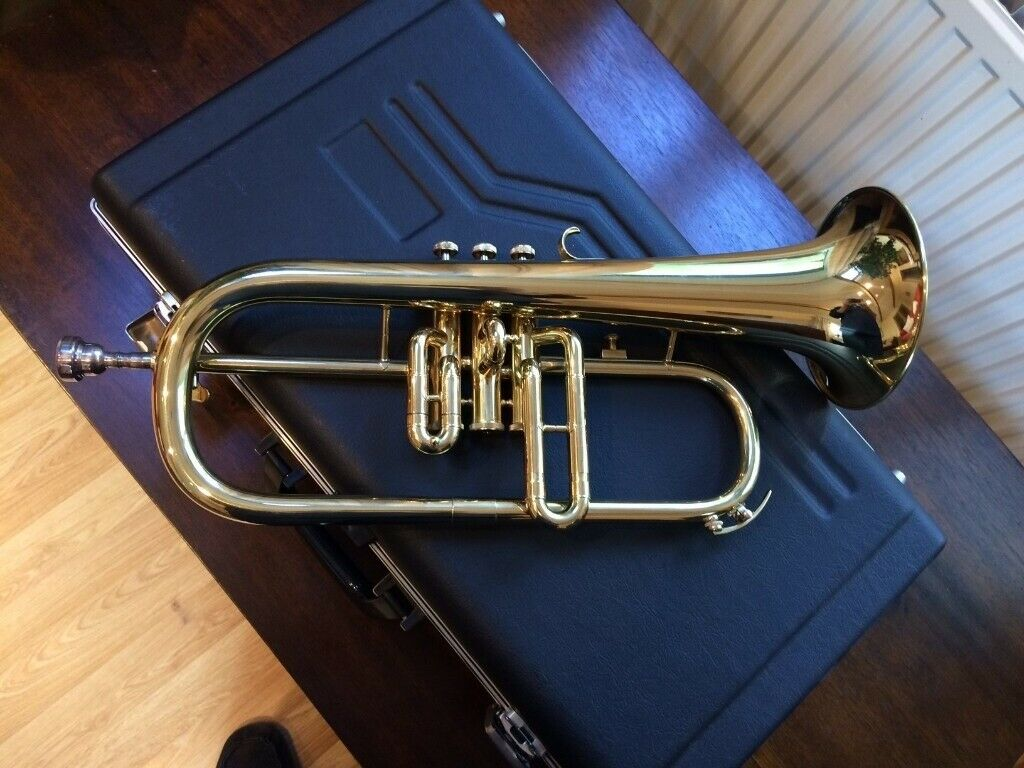
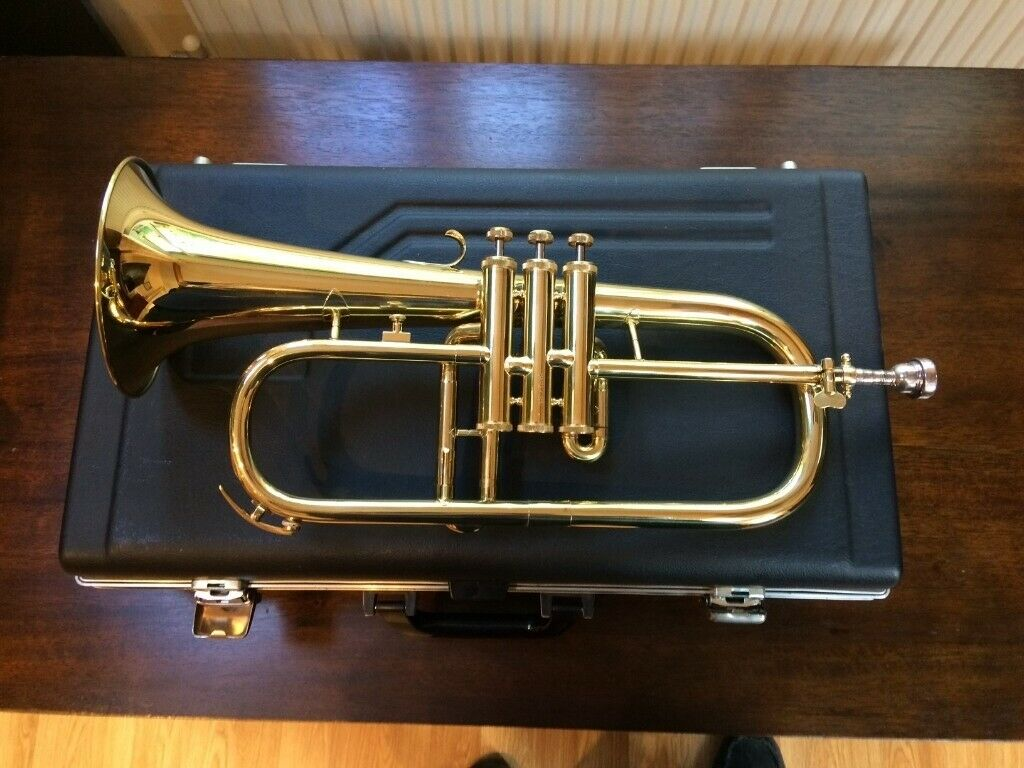
-
-
I just joined so am still trying to figure out the "rhythm" of this site.
I have one - it has "ATR213 Czech Republic" on the receiver, a stylized "ak" logo on the bell and s/n 227190 vertical on the bottom of the 2nd valve casing.
It appears to have had little use. The lacquer is perfect and no dents, dings or scratches. The valves seal well and have quick response. It appears well-built and is actually a good player. Would this be considered a student model or something above that? -
I am a Czech, so although I am not a music professional, I can try to be helpful, so feel free to ask.
BR,
zetka. -
Interesting. As I've been learning Czech lately, I now recognize that this is a Czech instrument, and I also know how to pronounce the name correctly!
-
I have experience of three Amati Kraslice instruments. A pocket trumpet (pretty sad but OK for the money), a stencil double french horn (pretty OK for a student model) and a forward-facing tenor horn (bassflugelhorn/basstrompete).



The tenor horn, pictured, was really quite good. I played it in small ensemble (and even in symphony once) for about five years before selling it on. I inquired about its age and got a response by email that it was “35-40 years old” (in 2016).
The sad part is, it has no serial!
Cerveny are currently producing a very similar tenor horn under its own mark (I believe it is CTR 592-3), which I have played side by side with this one. The new one is of course more airtight, more efficient, and slots more tightly, but the old one holds its own.
-
@Jolter The problem what I know is, that AMATI quite often made in 80s and 90s OEM instruments under different brands as well (Lignatone, Corton, York, Supertone, some instruments for B/H Besson etc), although they were mostly students instruments. I think that even Cerveny horns were marked and sold in those times under the Amati brand, although the Cerveny factory was focused mostly on cylinder instruments and they were made not in the main factory in Kraslice but in Hradec Králové. So the design of the instrument is primary, no matter of branding.
-
@zetka Well I'm very glad to have a Czech speaker to help demystify some of this! In the last few years [really in the last 8 months] we were able to get a large collection of Amati catalogs ranging from the 1960s to 1980s, and while they probably aren't a complete set, they definitely shed light on what was insanely confusing for so long. I'll add the links momentarily
-
And here's another one - ca. 1991 production ACR-241 pocket cornet with tuning shanks, though the serial itself makes me wonder if the parts were originally manufactured much earlier...
-
@ConnDirectorFan Most of the items here are on Horn-u-Copia in the Library, so I linked their OneDrive PDFs here for the smallest file size [and the original Google Drive scans where applicable] - hover over the text to see the link:
https://horn-u-copia.net/library.shtml
Amati-Kraslice piston, ca. 1970s-1980s [scans]
Amati-Kraslice rotary, ca. 1970s-1980s [scans]
Amati-Kraslice, 1976 per censorial mark [scans]
Amati-Kraslice, ca. 1976 [scans]
Amati-Kraslice, ca. 1968-1970 [scans]
Amati-Kraslice, ca. 1967 [scans]
Artia/Amati-Kraslice piston trumpets, ca. 1967 [scans]
Lignatone/Amati-Kraslice, ca. 1964 [scans]
Lignatone 351/Amati-Kraslice, ca. 1953
Lignatone 352/Amati-Kraslice, ca. 1954 [scans] - has a censorial mark indicating 1954
Ligna Spanish export [Lignatone]/Amati-Kraslice, ca. 1949 [scans] courtesy Gerard Westerhofand a 1975 EMI/Rosetti catalog showing Corton brasswinds and more
-
and some newer catalog/part items as well:
Repair parts: https://drive.google.com/drive/folders/1eufgahpSJ5qrHajU5hhgybjsw1v8Z0Ku?usp=drive_link2021: https://amati.cz/images/catalogue-download/amati-catalogue.pdf and https://www.vfcerveny.cz/images/catalogue-download/vfcerveny-cataloque.pdf
@ConnDirectorFan said in Amati-Kraslice - the ones we love to hate?:
@ConnDirectorFan Most of the items here are on Horn-u-Copia in the Library, so I linked their OneDrive PDFs here for the smallest file size [and the original Google Drive scans where applicable]:
https://horn-u-copia.net/library.shtml
Amati-Kraslice piston, ca. 1970s-1980s [scans]
Amati-Kraslice rotary, ca. 1970s-1980s [scans]
Amati-Kraslice, ca. 1976 [scans]
Amati-Kraslice, ca. 1968-1970 [scans]
Amati-Kraslice, 1976 per censorial mark [scans]
Amati-Kraslice, ca. 1967 [scans]
Artia/Amati-Kraslice piston trumpets, ca. 1967 [scans]
Lignatone/Amati-Kraslice, ca. 1964 [scans]
Lignatone 351/Amati-Kraslice, ca. 1953
Lignatone 352/Amati-Kraslice, ca. 1954 [scans]
Ligna Spanish export [Lignatone]/Amati-Kraslice, ca. 1949 [scans] courtesy Gerard Westerhof -
So now it's possible to cross-reference models with the catalogs! There are plenty of oddballs that don't quite conform [mostly early models], but it's now easy to see that the infamous "Conn Director grip ring" basic stencil is the Lignatone 2400 or 2401, later Amati-Kraslice 2440.
Bell garlands vary from the smaller ones on early Consul 2360 and Lignatone/Amati 2404, the Supertone 2503/2543 with a large garland, the flat-rim 2444 often co-labeled Bohland & Fuchs, the roll-past rim Arioso Super B-2580 [like the Buffet/Evette horns made in Germany], etc.
Cornets can be linked to the long-model 1200/B-1037, mid-length 1210/1250, shorter 1900/1910/B-1040, "Wonderphone"/"Connquest" tuning-bell 2551/B-1038, and of course the pocket cornet 200P, later B-1041/ACR-241.
Flugelhorn is usually 226... -
@ConnDirectorFan All given links contains quite complete and really invaluable material, because even in Amati itself they do not collect those old paper history prospects from communist era, so unfortunately you can not dig any more information about certain model from the old production there. It is very evident, that the export of AMATI musical instruments was very important for the company and the state itself as a source of foreign currency, which was a great need.
-
@zetka said in Amati-Kraslice - the ones we love to hate?:
@ConnDirectorFan All given links contains quite complete and really invaluable material, because even in Amati itself they do not collect those old paper history prospects from communist era, so unfortunately you can not dig any more information about certain model from the old production there. It is very evident, that the export of AMATI musical instruments was very important for the company and the state itself as a source of foreign currency, which was a great need.
That was the goal! I agree with everything you said; their current US distributor has found that Amati have a clean slate every decade or so, leading to discontinuity we see here. The hard-currency export mission outweighed the documentation, it seems, as only two brochures had censorial marks indicating the year...! Amati-Kraslice, 1976 per censorial mark [scans] was one I forgot to include, but it establishes a hard date for obscure variations.
-
Another interesting piece - this "R1M" imitation of some Rudy Muck mouthpiece, which is visible in the 1963 Lignatone catalog
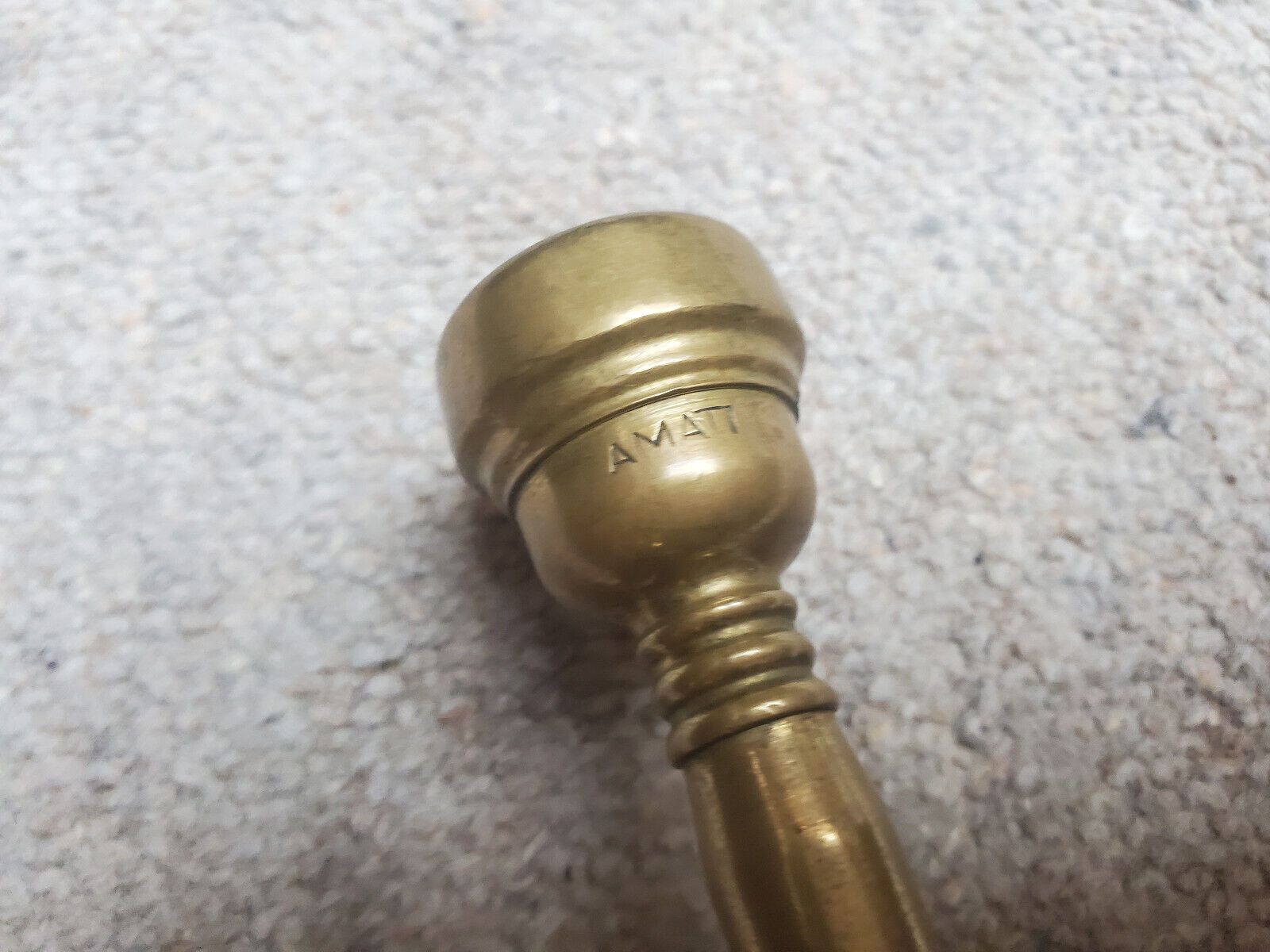
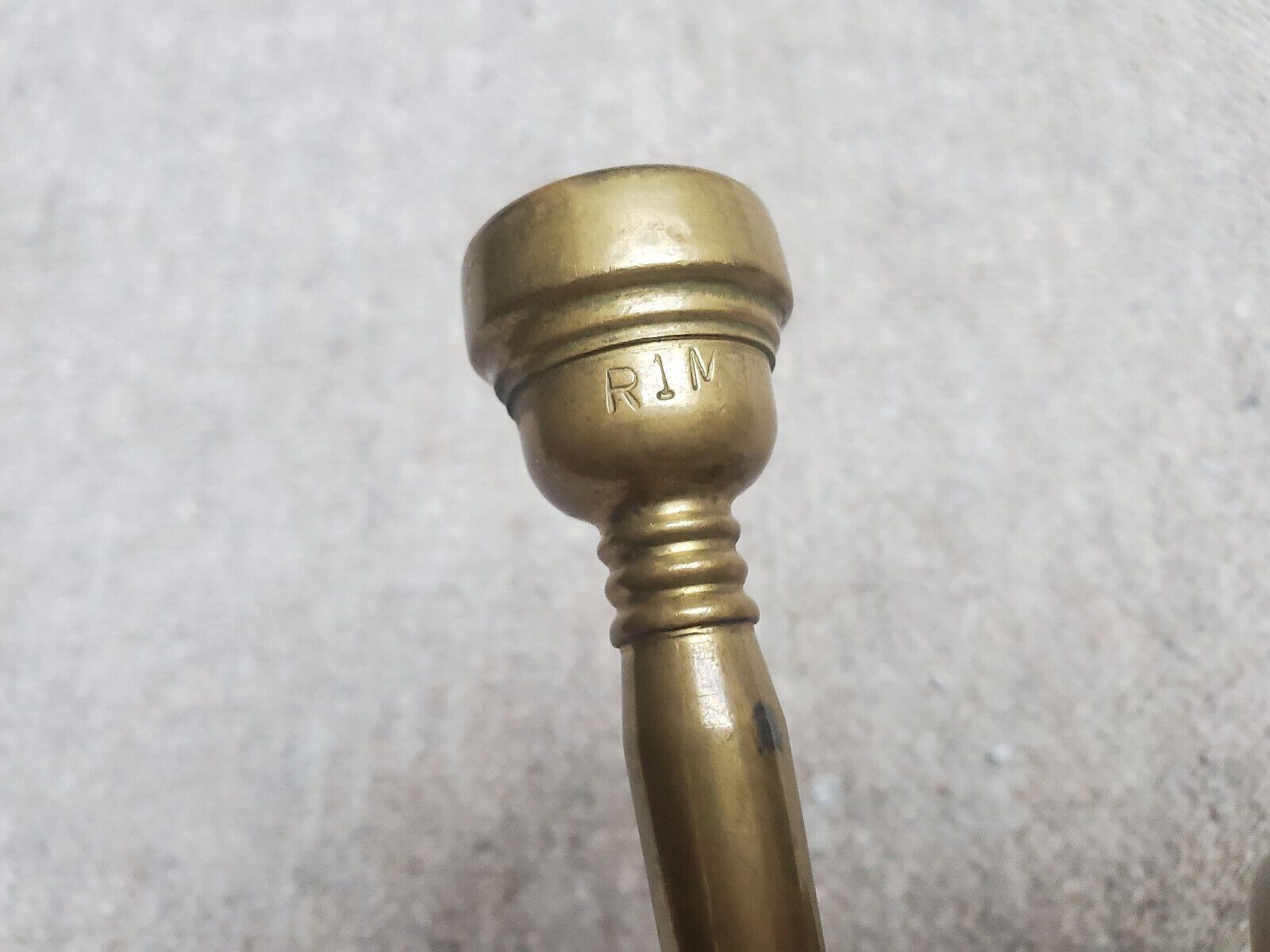
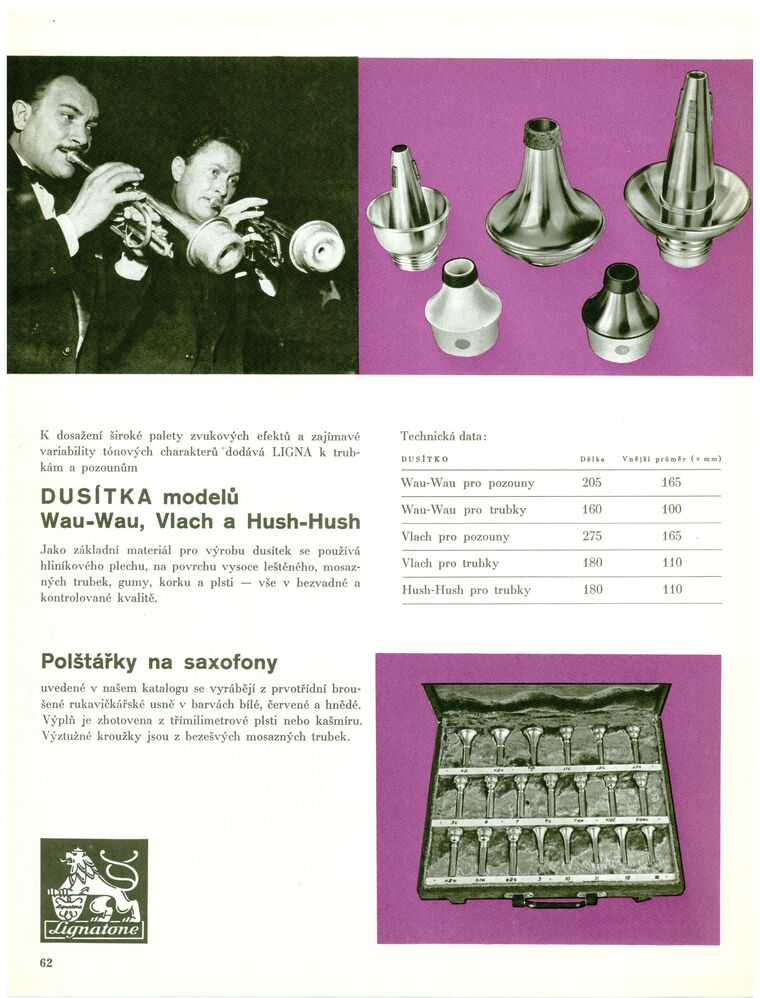
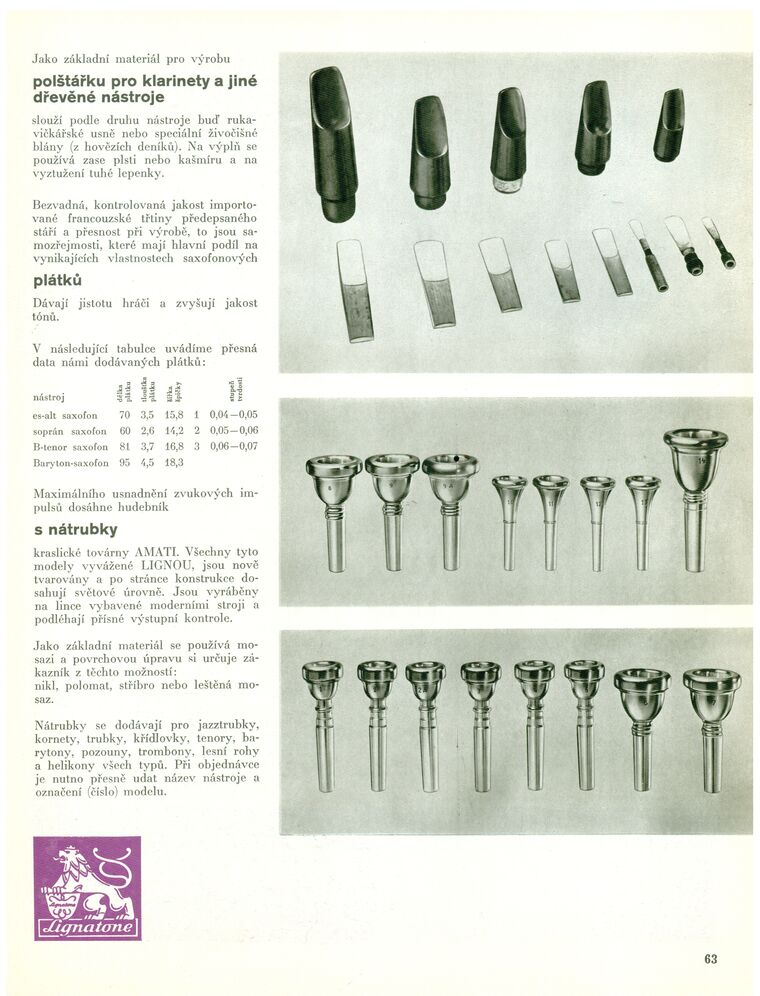
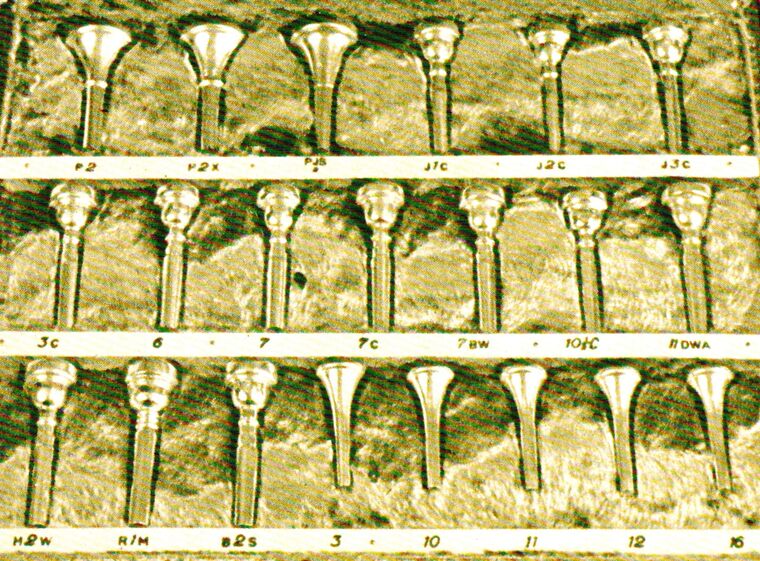
-
@ConnDirectorFan Unique prospects! I am having some of the Amati trumpet older MPCs, by my amateur feeling they were made more by the older VB flatter rim (my subjective feel). I know some of the unusual ones such as the double cup H2W (something like Selmer Special), but I did not meet the RM1. As far as I have few RMs Made in the USA and Made in England and although they have the same description, they are quite different in size and look (17C,19C and some 18M). Do you have the MPC prospect complete to see it in full? I miss there the some of the standard ones, such as 1, 1C, 1 1/2C etc. I miss there the 7E, 7CW etc. I played them about 40 years ago in the 80s and I am returning to them to find, that they are really not bad sounding.
-
@ConnDirectorFan BTW, the man on the picture left is a well known trumpet (cornet) player, actor Jiří Jelínek. He was very popular in the 60ies and when Louis Armstrong concerted in Prague in 1965, he performed for him in the Semafor theatre. Link is here .
-
Sadly I've never found anything about Amati mouthpieces beyond the pages you see here, and a chart/table showing specifications of trumpets/cornets from the 1980s - it shows the standard mouthpieces included with different models, but it basically is just the 7C/7E...
They never published a mouthpiece catalog on its own that anyone remembers, and the catalogs I've seen barely discuss them. What you see in the links is everything I've ever found...I'd agree that the rims are flatter than Bach equivalents, though I'd also say they were sometimes very odd - I've encountered 3 or 4 pre-2000 7Cs that have a sharp inner bite, with a rim that slopes downward from there. The rim itself is wide, flat, but slopes down toward the outside! Not especially comfortable.
I've had several other Bach-influenced ones with the same characteristic, except for a few.
I have two 7EW versions, one stamped Czech Republic, the other nothing [just the model]. The model stamp is atrocious, but the rim is extremely flat and broad. The rim bite is not higher than the rest of the rim, and the cup is much tinier and shallower than any 7EW Bach ever made! It's a bit hard to play long-term, but for a useless trick-shot Double High E-flat intro on "Chameleon", it's a neat piece!
The Circe piccolo piece is a bit wide, but still nicely made. It's not nearly as extreme as the 7EW...!
I have photos of the various ones sold, which I'll probably post at some point.I have the 3 and 10 cornet pieces, copied from Bach as well. They're pretty close and are done quite well. The trumpet 10 has a different rim, but still is decent.
As far as the older ones, I've encountered various "MADE IN / CZECHO / SLOVAKIA" models, some with the pre-war serif stamp, most with the post-war sans-serif stamp. Some have the Ⓐ & number stamp, most do not. These often have wide, flat rims and round rim bite, and while not super distinguished or special, still play okay. At some point these weren't considered good enough, so they started explicitly copying other versions. I think the H2W might be a nod to Meister Hablowetz [Hablawetz also...
Rudy Muck pieces are all over the place, possibly due to the licensing arrangements and just plain inconsistency.The newer heavyweight ones are another breed entirely. They're consistent, but the designs changed - the 2000s 7EW has a super-round, super-wide rim like a half-circle cross-section. There is no bite to speak of. The cup is shallow, but it was hard to play - I sold it to a friend who is often overseas, so chances of borrowing or buying it back to have scanned are low. Asking Amati to buy a new one resulted in "Klier makes our current mouthpieces"...so acquiring one is probably out of the question.
The 3 and 10 are different than the older cornet versions, but still respectable.@zetka said in Amati-Kraslice - the ones we love to hate?:
@ConnDirectorFan Unique prospects! I am having some of the Amati trumpet older MPCs, by my amateur feeling they were made more by the older VB flatter rim (my subjective feel). I know some of the unusual ones such as the double cup H2W (something like Selmer Special), but I did not meet the RM1. As far as I have few RMs Made in the USA and Made in England and although they have the same description, they are quite different in size and look (17C,19C and some 18M). Do you have the MPC prospect complete to see it in full? I miss there the some of the standard ones, such as 1, 1C, 1 1/2C etc. I miss there the 7E, 7CW etc. I played them about 40 years ago in the 80s and I am returning to them to find, that they are really not bad sounding.
-
@zetka said in Amati-Kraslice - the ones we love to hate?:
@ConnDirectorFan BTW, the man on the picture left is a well known trumpet (cornet) player, actor Jiří Jelínek. He was very popular in the 60ies and when Louis Armstrong concerted in Prague in 1965, he performed for him in the Semafor theatre. Link is here .
Very neat - thanks! I've seen references to a "Signatone" [sic - Lignatone] Consul trumpet presented to Armstrong at one point as well.
The 1976 catalog has a center-section pic of Dizzy Gillespie [?!] interestingly enough -
@ConnDirectorFan That's very interesting to hear, that JK are now providing their mouthpieces. So they got out of that business altogether, then.
I never saw their 7EW, but I bought a new 7DW when I visited Praha in 2004 or so. It had a wide rim, which was quite flat, a fairly sharp inner bite and a tiny tiny cup in a heavyweight blank. (Not quite megatone-weight but something like that.) I was coming from a Yamaha 11C4/7C and was hoping for just that little push in endurance/range. The honeymoon was nice. Unfortunately my intonation and tone suffered, and this was when I first discovered my lips are too big to be able to play extremely small sizes. I was young and stupid but a senior section member clued me into that my new mouthpiece was not helping my playing.
(The wide rim promoted some bad habits, too, like I used a lot of pressure those days...)
I passed the MP on to a donation drive, instruments for poor students. Hopefully one of them had thin lips...
